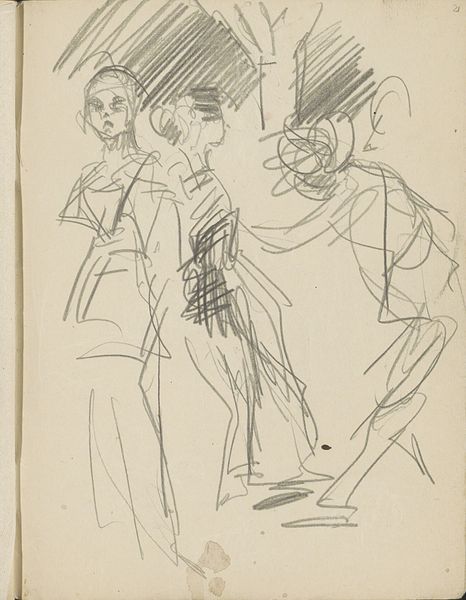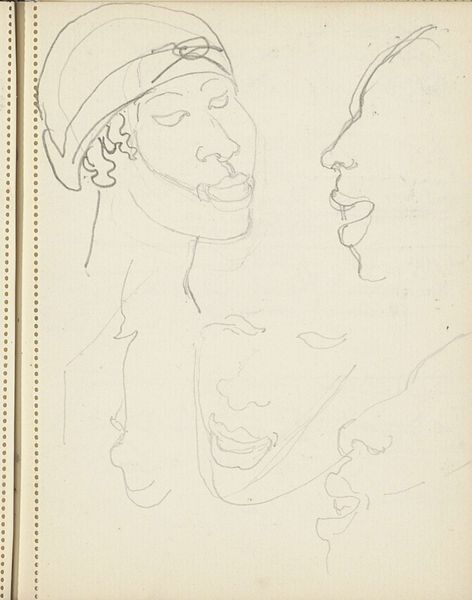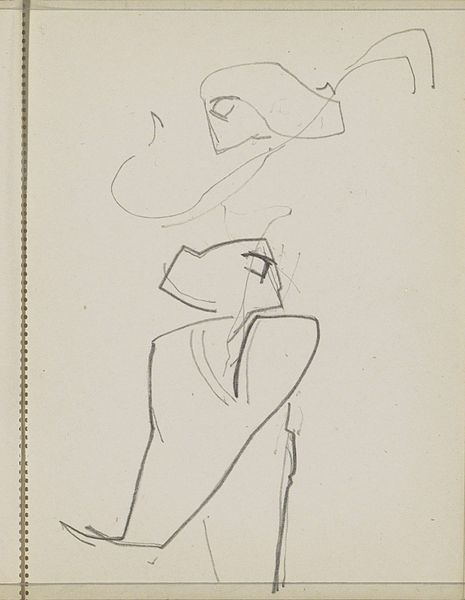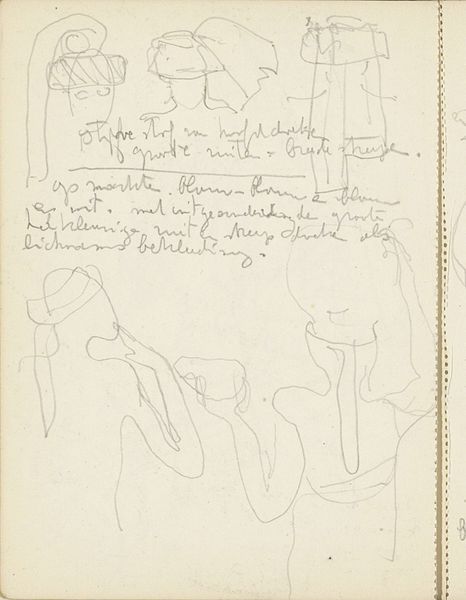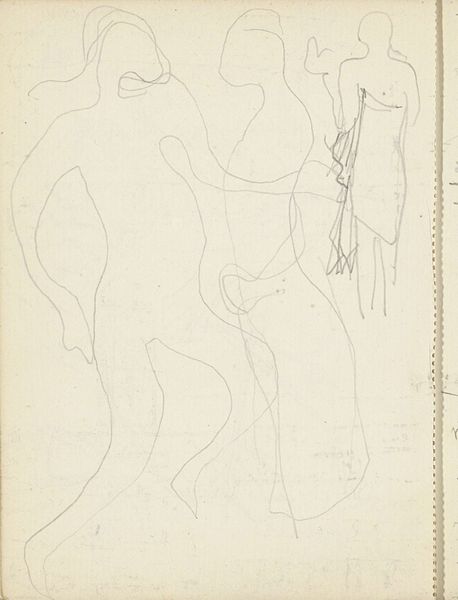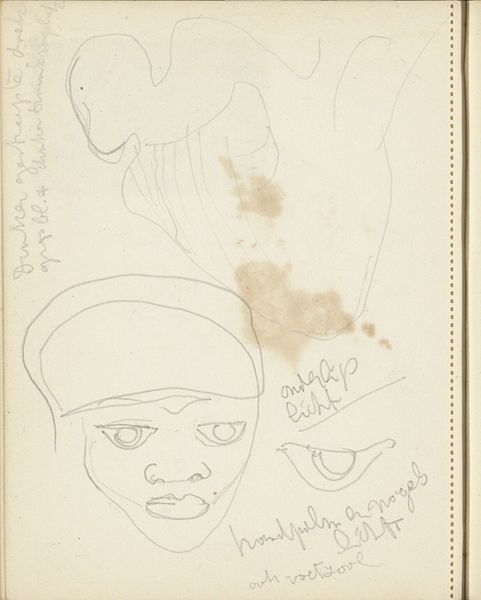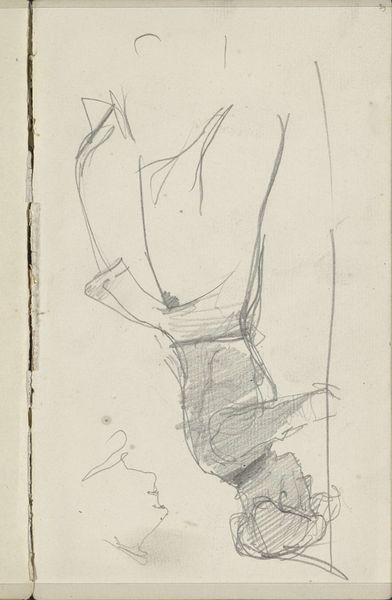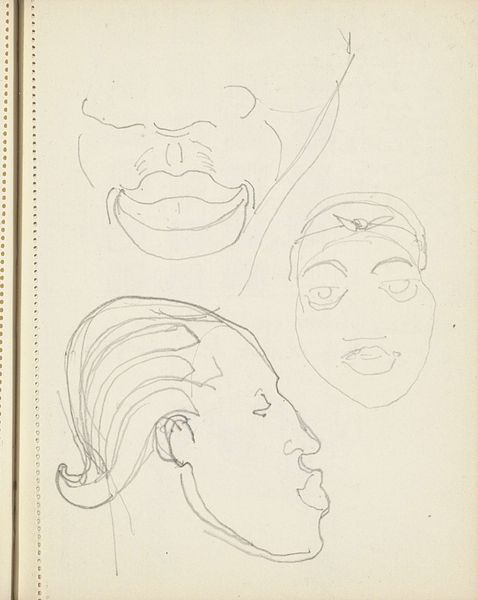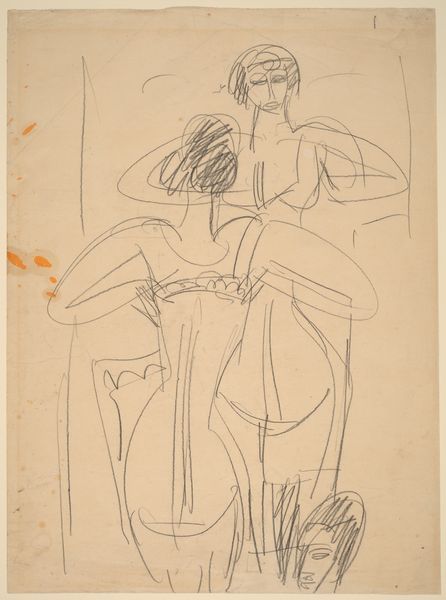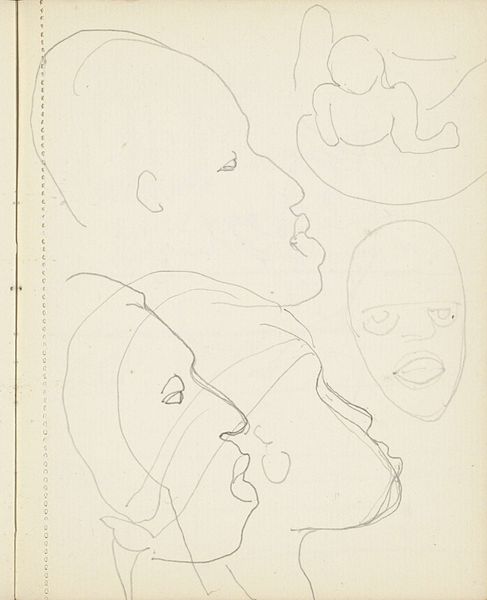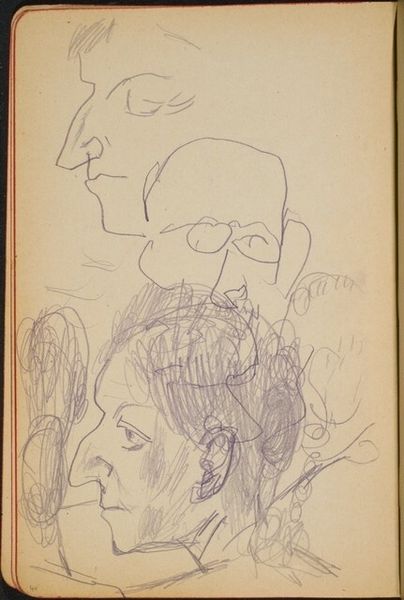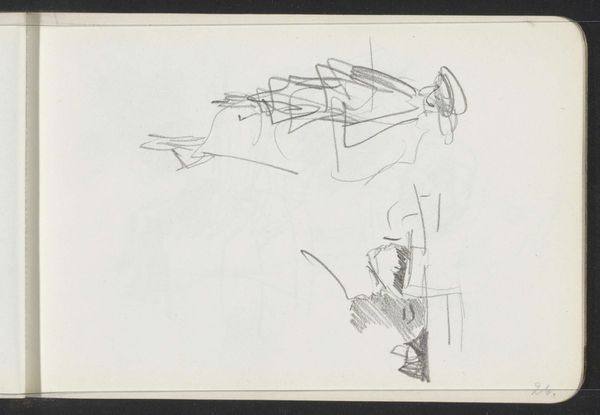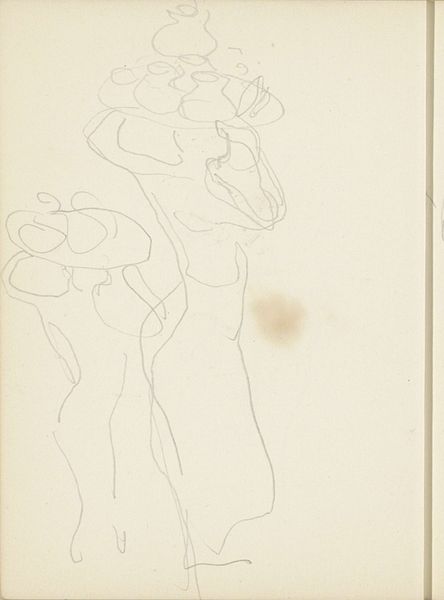
drawing, pencil
#
portrait
#
drawing
#
comic strip sketch
#
imaginative character sketch
#
light pencil work
#
cartoon sketch
#
figuration
#
personal sketchbook
#
idea generation sketch
#
character sketch
#
ink drawing experimentation
#
pencil
#
sketchbook drawing
#
sketchbook art
Copyright: Rijks Museum: Open Domain
Curator: Looking at "Afrikaanse vrouw die een last op het hoofd draagt," a pencil drawing held at the Rijksmuseum and created sometime between 1916 and 1945, what stands out to you initially? Editor: The fragility, the sheer lightness of the lines. It feels less like a finished work and more like a glimpse into an artist's process, a quick study with some political and historical weight behind it considering it is supposed to depict an African woman, during that time. Curator: Indeed. The quick, almost fleeting strokes do suggest a work in progress. Notice how certain features are emphasized—the carriage of the body, the hats, the eyes on those two isolated faces. Sketches, in a way, allow us to see the thought behind the image. What ideas do these images conjure for you? Editor: The title and sketches position the figure within a context of labor, likely colonial labor, and even, potentially resistance. What burdens were placed on black women's bodies during this period, both literally and metaphorically? The floating disembodied facial images seem to observe the work taking place by the figure, creating a power dynamic, one gaze looking upon another. Curator: It's fascinating how you pinpoint that idea of observation, and power. Symbols are powerful tools of suggestion. Considering the drawing style, particularly the isolation of features like the eyes and lips, does that visual shorthand suggest to you any deeper meanings beyond race and gender in the history of symbolism? Editor: I read these visual symbols through the lens of history and struggle. Where were these images seen? In Europe? And what was their intended function within a colonialist vision that exoticized and oppressed at the same time? Curator: These images resonate, however disparate or unresolved, because we feel something in the line and stroke. In that tension, the visual field, there’s both the gaze and the act of revealing, right? It is just an idea, but a striking idea, which suggests its own power. Editor: Absolutely. The image serves as a haunting reminder of how bodies were being observed, drawn, and exploited—power and agency, reduced to a sketch. Curator: Indeed. It highlights the importance of considering historical context to illuminate cultural ideas present within a simple drawing. Editor: Precisely. It reminds us that even in seemingly unfinished art, we see reflections of power and inequality.
Comments
No comments
Be the first to comment and join the conversation on the ultimate creative platform.
